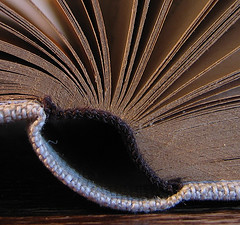 I first encountered an AR app in 2012, with the National Trust's ' 'Lost! 100 lost
buildings of Melbourne' the Trust's iPhone app. The interactive 3D app enables users to "ghost" - visually overlay buildings from the past onto the present, by augmenting the iPhone's existing camera function. A history, photos and stories of these often long-demolished buildings is also available.
I first encountered an AR app in 2012, with the National Trust's ' 'Lost! 100 lost
buildings of Melbourne' the Trust's iPhone app. The interactive 3D app enables users to "ghost" - visually overlay buildings from the past onto the present, by augmenting the iPhone's existing camera function. A history, photos and stories of these often long-demolished buildings is also available.
On the left is the Fire Brigade Tower at the rear of 447 Little Bourke Street, built in 1882, it was the 6-storey lookout tower of Melbourne's first fire station.
Then recently on a visit to the new gee-whiz Library at the Dock in Melbourne's Docklands we got to see and play with their interactive screens, including the underwater themed one in the kids section (though the little girl in the green gumboots was the best prepared), and the time-lapse of the development of Docklands (what they are calling the greening of the precinct, as it changes from industrial to shopping and residential).
And finally I came across this YouTube video at Weburbanist on augmented sandbox real-time 3D topographical landscaping.
Library related applications of AR, include a LibraryThing “overlay” for the mobile phone app Layar. It draws on LibraryThing Local to show you the closest bookshops and libraries. Then how about "Virtual bay-ends" using the Aurasma platform -Pointing a mobile device at a particular image overlays directional arrows to where that type of resource is located – giving users an initial idea of where to find what they are looking for.
Among the Thinking Points, I liked the idea of utilising AR technology to "overlay local history film and audio clips into your local environment using an AR app".
 |
| Playing underwater with the AR screen at The Dock library in Melbourne |
Then recently on a visit to the new gee-whiz Library at the Dock in Melbourne's Docklands we got to see and play with their interactive screens, including the underwater themed one in the kids section (though the little girl in the green gumboots was the best prepared), and the time-lapse of the development of Docklands (what they are calling the greening of the precinct, as it changes from industrial to shopping and residential).
And finally I came across this YouTube video at Weburbanist on augmented sandbox real-time 3D topographical landscaping.
Library related applications of AR, include a LibraryThing “overlay” for the mobile phone app Layar. It draws on LibraryThing Local to show you the closest bookshops and libraries. Then how about "Virtual bay-ends" using the Aurasma platform -Pointing a mobile device at a particular image overlays directional arrows to where that type of resource is located – giving users an initial idea of where to find what they are looking for.
 |
| Maybe similar to this? |





No comments:
Post a Comment